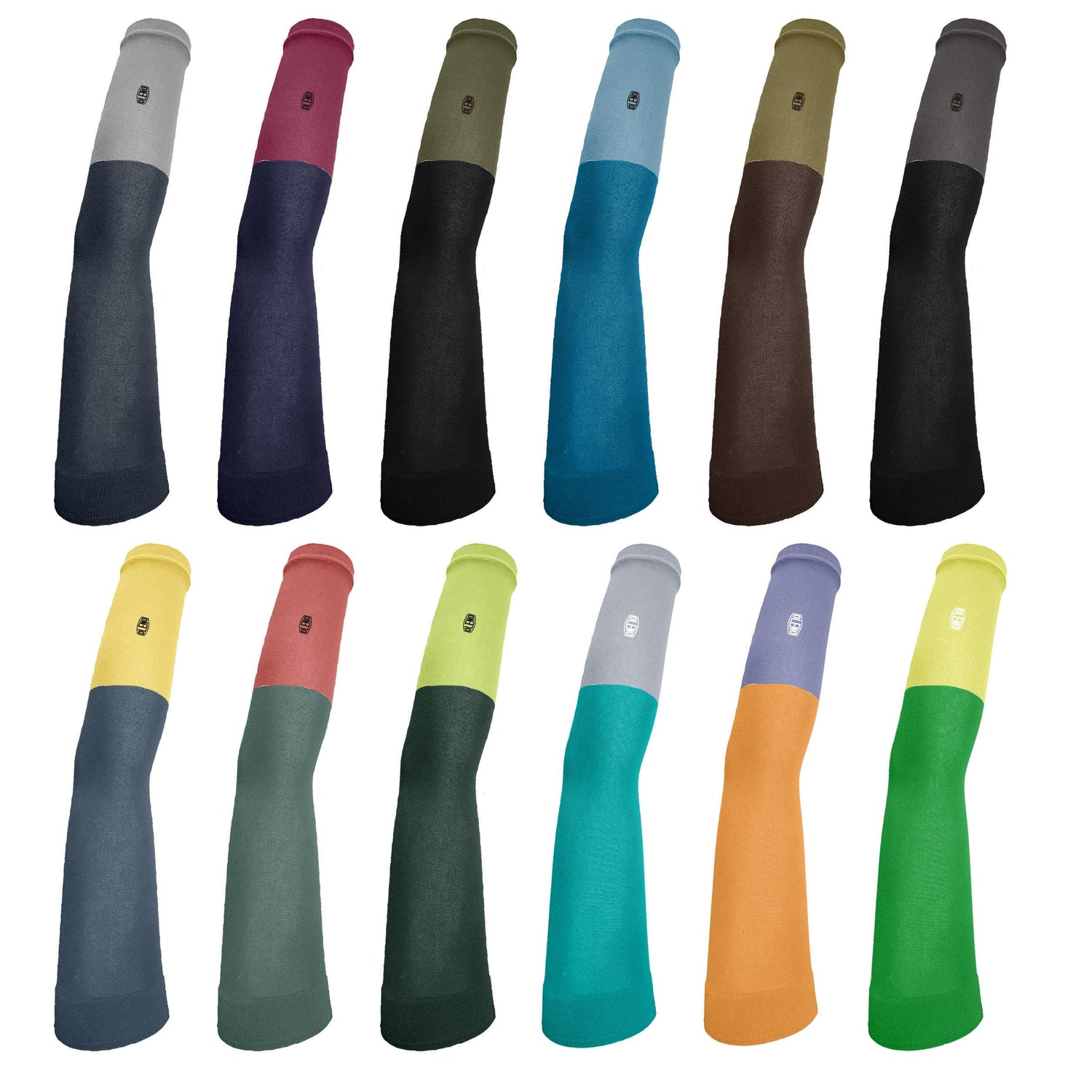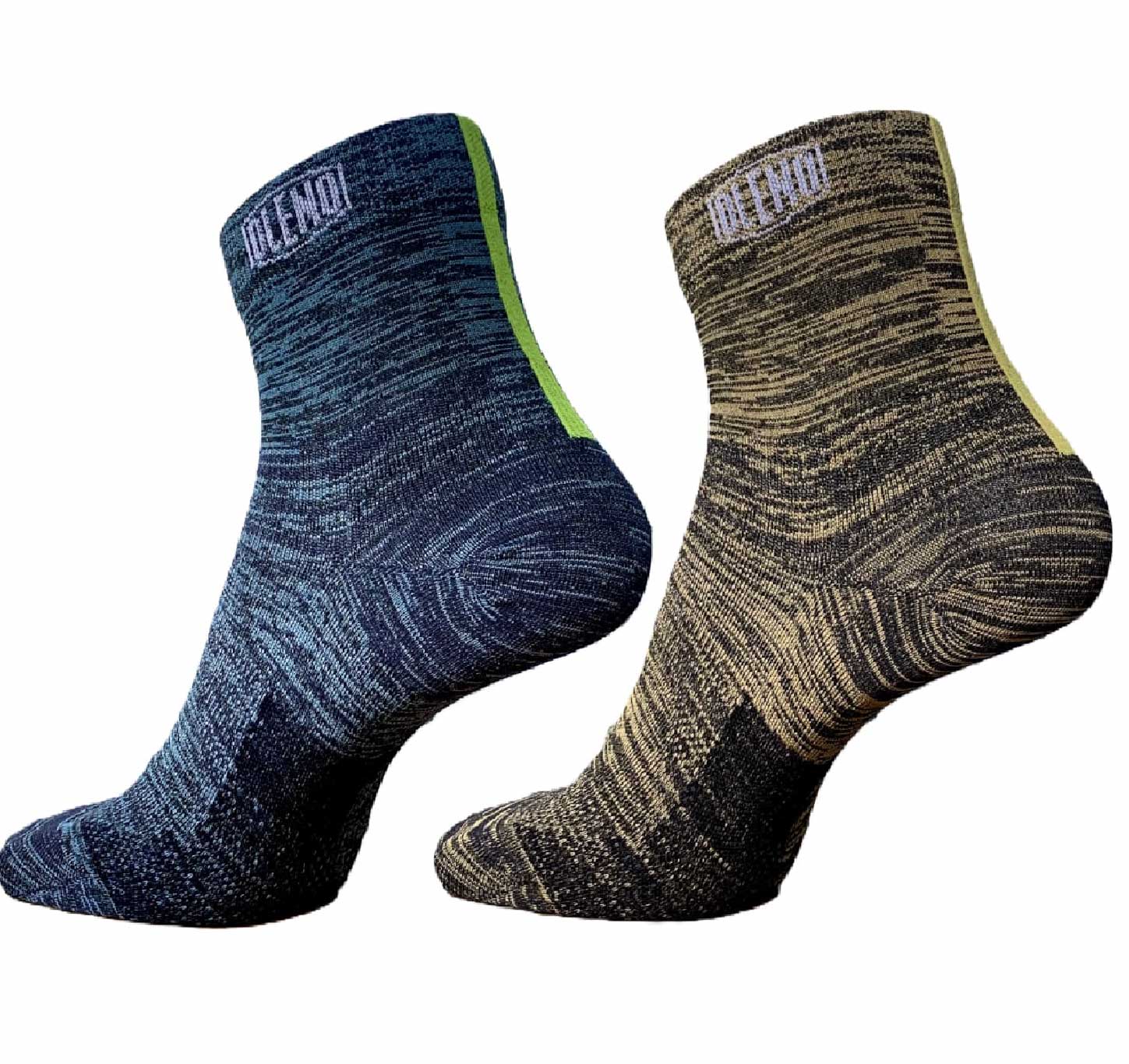Hello, I'm Nomaru, a developer who is getting scolded by new employees for not writing a blog at all (lol).
This time, I'd like to talk about the latest model in the "Comod(y) series," which I was in charge of!
"Comod(y) Series"
It is a popular series that can be worn comfortably all year round for running and outdoor activities as well as for everyday use, but the reality is that the lineup is limited.
" I'm looking for merino socks that I can use for long races ."
This request from a runner was the beginning of a new development.
Let's hear more details.
" When the temperature difference between morning and evening is drastic, my shoes and socks get wet with morning dew and my feet become soggy, " he said.
So I suggested a model that was excellent at absorbing water and drying quickly, but it turned out that it was already being worn.
In other words
Models with excellent water absorption and quick drying properties tend to become soggy ,
I found that wool-based socks don't get as soggy .
In fact, I was shown photos of the soles of my feet soaked with morning dew.
Why don't wool socks get soggy?
To be honest , at the time I didn't really understand the mechanism by which "wool-based socks" are less likely to become soggy than "socks with excellent moisture absorption and quick-drying properties."
Just thinking about it,
Perhaps it is necessary to use different materials depending on the situation, based on their functionality.
・Water-absorbing and quick-drying type: absorbs sweat quickly and dries quickly → Perfect for when it's hot or the temperature is high
and
・Wool type: Water-repellent properties make it difficult for moisture to be retained in the socks → Great for morning fog and humid situations
I decided to try dividing it up.
This means:
"By adding a wool-based model, which is the polar opposite of the conventional Comod(y) series, which has excellent moisture absorption and quick drying properties, we have greatly expanded our options."
This idea came to mind, and development accelerated.
 Comparison test of game functionality
Comparison test of game functionality
Left: When water droplets are dropped onto Pecora, the wool's functionality makes it water-repellent.
When water droplets fall on the right tie, they are absorbed by the quick-drying properties of polyester.
Searching for wool socks that can withstand running
Many of OLENO's items are wool-based, but they are generally not made for running.
This time, Pecora is
"Comfortable for everyday use, but also suitable for running"
This is a new concept for wool types.
First, a prototype was made from 100% merino wool and then field tested at the LAKE BIWA 100 event in the fall.
We received a report that the runner completed the race without any sores on the soles of his feet!
However, I'm concerned about the durability of 100% wool.
That's where Nikke AXIO® comes in, a product made by twisting wool and filaments. It has the properties of wool while improving strength with high-strength fibers.
Furthermore, durability has been greatly improved by reinforcing areas that are subject to heavy wear.
(Actual abrasion resistance tests showed that the socks were eight times stronger than regular running socks.)
And above all, comfort
As a company that has always pursued comfort, OLENO was concerned about whether changing materials to increase strength would compromise comfort.
We then made final improvements based on feedback from over 100 runners who wore the second prototype in actual races, resulting in the completion of the Pecora, which can be worn all year round.
Even though it's made of wool, isn't it an exaggeration to say it's comfortable all year round?
Honestly, I think that's the part that bothers me the most.
In fact, I think many people are reluctant to wear wool socks as the temperature starts to rise.
I wondered what the real situation was,
・Left foot is pecora
・The right foot is a cotton-based sock
We tried it out and tested it.

Temperature comparison after running (temperature 26 degrees, after running 10 km)
・pecora 35.0℃
・Cotton-based socks: 35.3℃
Next,
・Left foot is pecora
・Right foot is Tie (polyester material)
We tried it out and tested it.

Temperature comparison after running (temperature 20 degrees, after running 10 km)
・pecora 34.9℃
・Tie 35.1℃
The results showed that the temperature inside the socks did not change significantly depending on the material.
(Results may change when the outside temperature warms up a bit.)
Many sports socks sold at sports shops are cotton-based , and when worn in hot weather, they absorb sweat quickly, but they don't dry ...
When it comes to the inside of your shoes, they just get steamy without coming into contact with the outside air, which can lead to more foot problems and a smelly feeling ...
It is precisely at times like these that you can wear wool-based socks, which absorb moisture when the inside of your shoes get steamy, and absorb sweat when you start to sweat more. They don't stick to your feet and keep the inside of your shoes comfortable, reducing foot problems and eliminating odors.
We can confidently recommend Comod(y)pecora, so please give it a try!






